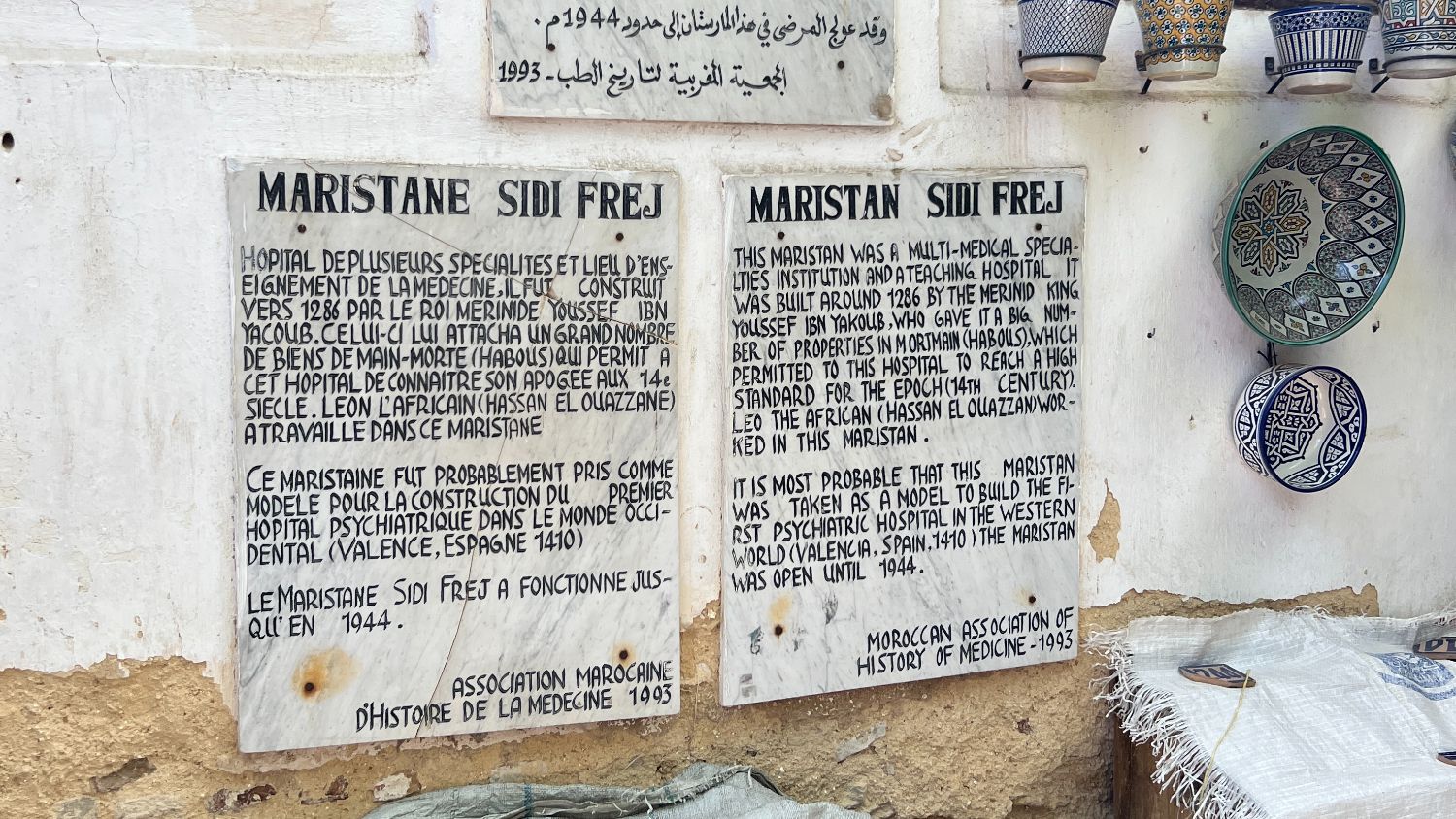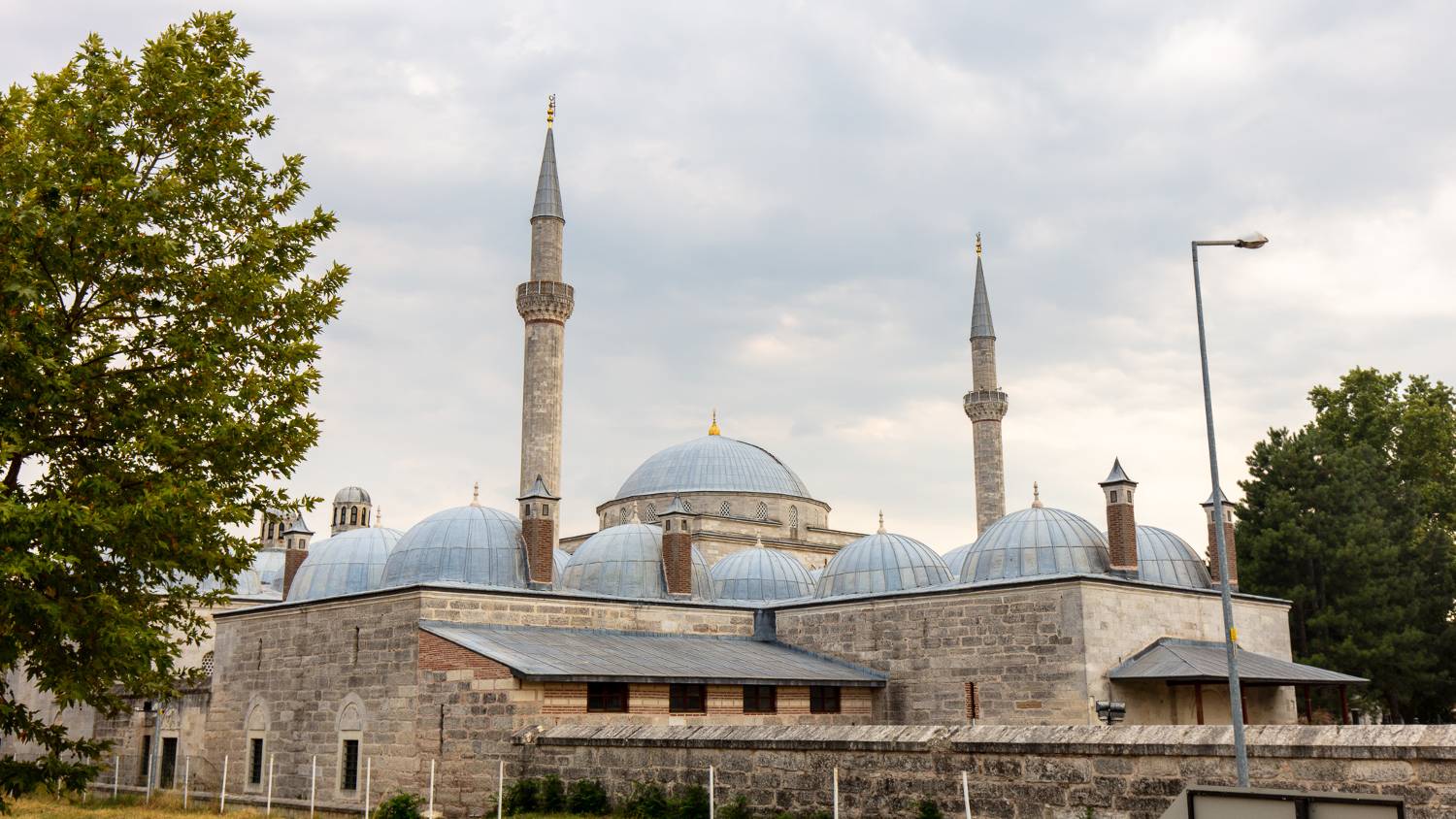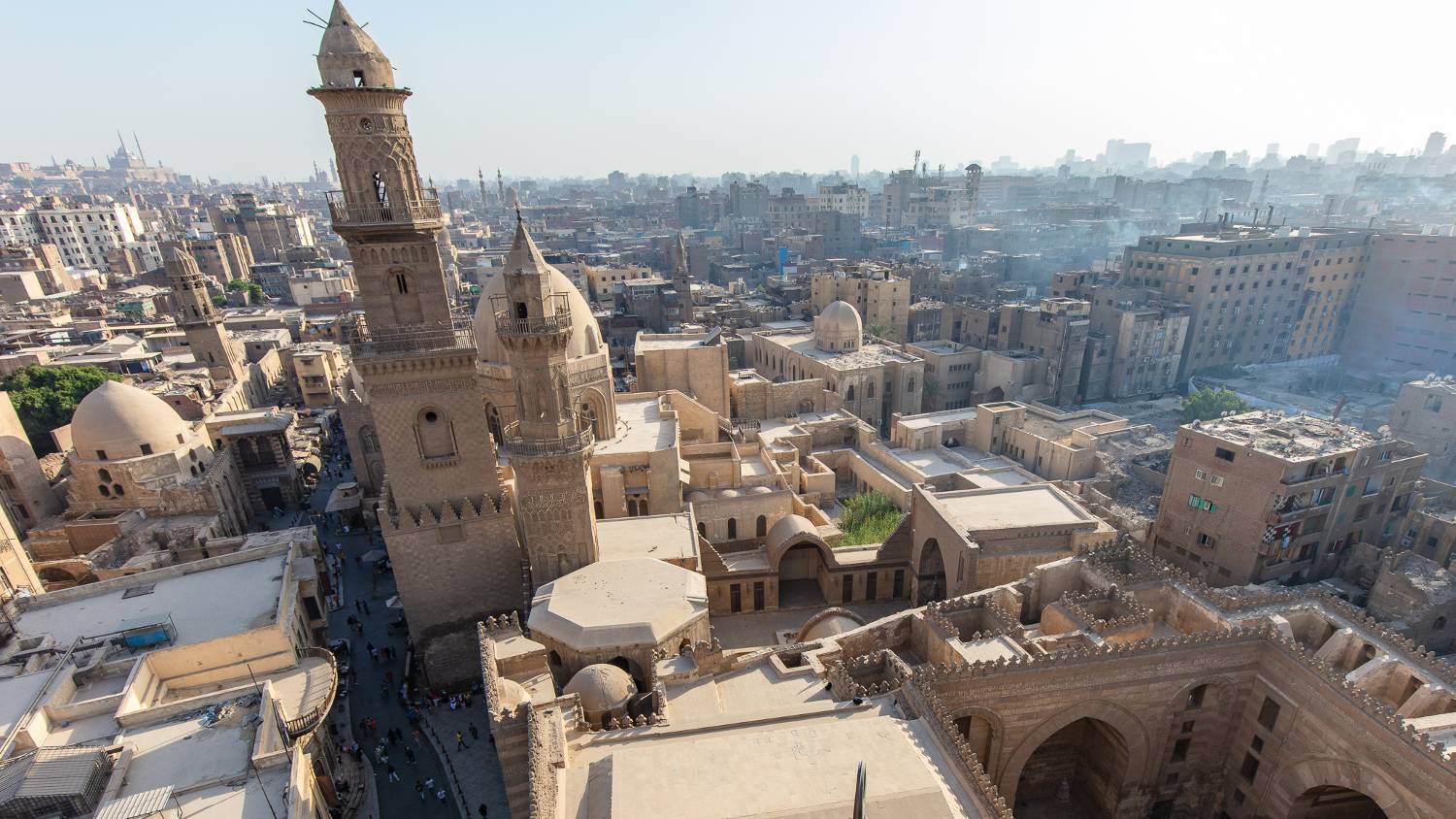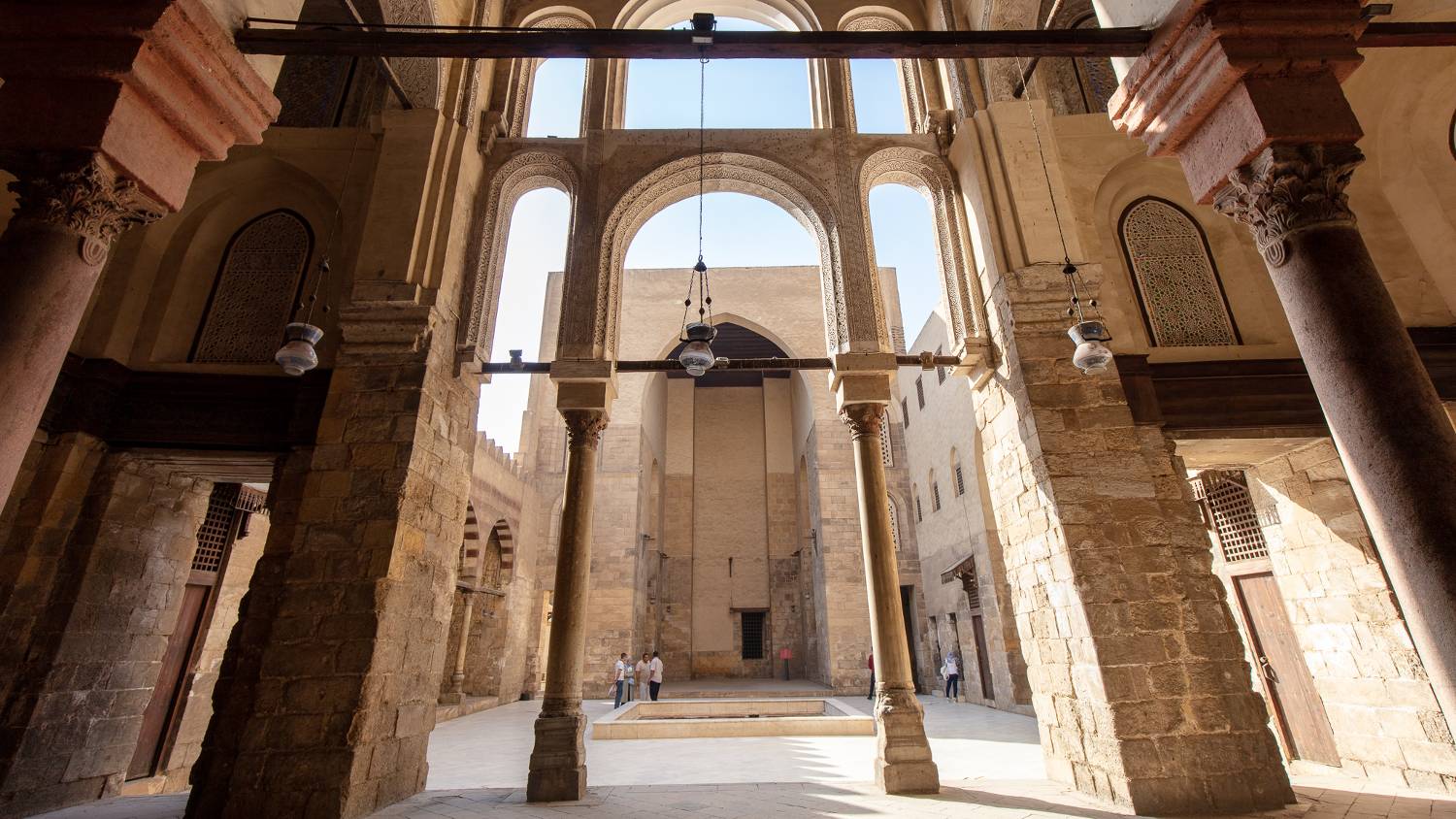The bimaristan: How early Islamic hospitals pioneered treatments like eye surgery and music therapy
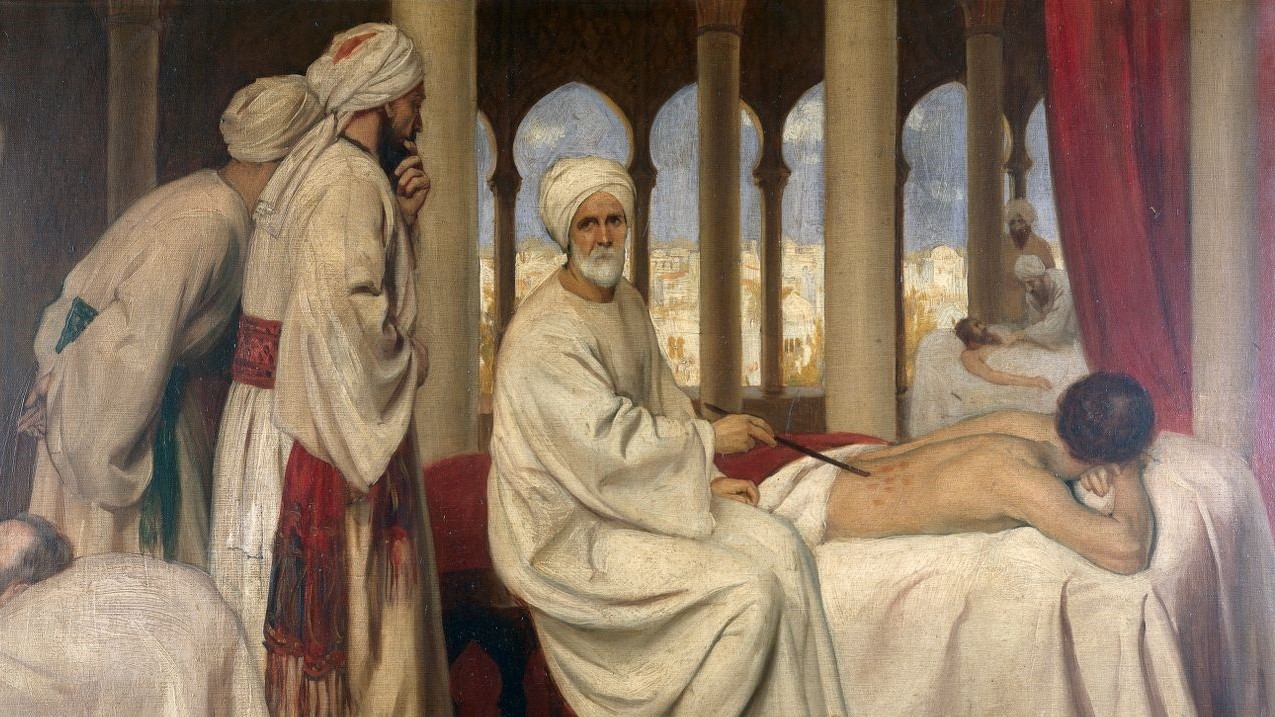
The science of healing dates back millennia and systemic attempts to treat disease can be found in classical Greek, Persian and Indian civilisations.
However, the institution of a hospital as we understand it today, and the practices found within it, have a peculiar history not commonly known.
While the Greeks had the asclepieia, or healing temples, and the Romans had valetudinaria, or military hospitals, a more recent antecedent for the modern hospital can be found in the medieval Middle East.
What the Persians and Arabs called bimaristan, or darushifa in Turkish, was the birth of an institution and an idea that revolutionised medicine and healthcare.
The word, which derives from Persian, comes from the word for a sick person, bimar, and the suffix stan means place of. A bimaristan therefore literally means place of the sick.
New MEE newsletter: Jerusalem Dispatch
Sign up to get the latest insights and analysis on Israel-Palestine, alongside Turkey Unpacked and other MEE newsletters
While Christian Europe had facilities to host the sick in monasteries, the extent of their activities is not widely established in modern academia. What is known, however, is that the medieval Islamic world had an expansive system of treating the sick comparable to the modern hospital.
The earliest Islamic example of something resembling bimaristans dates back to the time of the Prophet Muhammad, when a woman named Rufaida Al-Aslamia set up a treatment facility in a tent during the Battle of the Trench in 627.
Later, this concept of a mobile bimaristan expanded into large, dedicated units found in city centres around the Islamic world, equipped with medicinal herbs, pharmacies and full-time physicians.
No patient was to be turned away, regardless of their race, religion, gender or illness
The first major bimaristan was established in Damascus in 706, followed by several more in the following centuries in the cities of Granada, Cairo and Baghdad during the rule of the famed Abbassid caliph, Harun al-Rashid.
By the end of the 15th century, Muslim Cordoba alone reportedly had between 40 and 50 hospitals.
Free world-class healthcare
What makes these establishments so important and unique is that they were founded at a time when public hospitals did not exist.
The bimaristans in the Arab and Muslim world offered what was at the time world-class healthcare, and without charge to the patient.
No patient was to be turned away, regardless of their race, religion, gender or type of illness, including mental illnesses and contagious diseases.
Besides having separate wards for different illnesses, patients suffering from anxiety or showing signs of psychological distress were treated with the same urgency as patients with physical illnesses - a remarkable fact, given mental health has only recently been taken seriously in western medicine.
The patients, as well as practitioners in bimaristans, would have been Muslim, Jewish or Christian, with up to 28 physicians doing the rounds in each institution. Most hospitals would also include pharmacies that carried medicine or remedies imported from as far away as India.
The majority of hospitals were funded through charitable donations or waqfs - endowments. When a waqf was set up, a legal contract would be drawn up that stipulated conditions for the operation of the bimaristan. It was these documents that ensured a bimaristan kept its doors and services open to all those who needed care.
In large cosmopolitan cultural capitals, such as Baghdad, Damascus or Fes, the ruling and noble class would feel a sense of obligation to create institutions for the benefit of common folk.
A bimaristan, madrassa (school) or hamam (bath house) would not only raise the standard of living for ordinary people, it was seen as a charitable act that would inevitably make rulers more popular.
The hospital of Nur al-Din in Damascus, created by the Zengid Sultan Nur-al Din Zengi, is a fine example of a 12th-century bimaristan that demonstrates the vast efforts the sultan underwent to please his subjects.
Further west, in the old medina of Fes, Morocco, signs of another unique and important bimaristan can be found.
The Maristan of Sidi Frej, founded in 1286 by the Marinid King Youssef Ibn Yakoub, functioned as a hospice for the destitute and mentally ill up until 1944, making it one of the longest continuing institutions of its type in history.
It served not only human patients, but also had the curious function of operating as a stork hospital to nurse the sick and injured birds back to health. Such charity towards humans and animals could not have been possible without donations from wealthy and powerful donors.
So advanced and popular were bimaristans in North Africa and the Middle East that patients and scholars would travel from across the world for treatment and teaching. The Andalusian scholar Ibn Rushd, for example, left Cordoba to teach in a bimaristan in Marrakech.
Types of treatment
Bimaristans were at the forefront of groundbreaking medical advances during the medieval ages, including developments in surgery, anatomical and disease studies, and a focus on less visible conditions, such as psychological disorders.
Eye surgery (especially cataract) was one of Islamic medicine's greatest success stories, with the Andalusian polymath Abu Al Qasim Al Zahrawi (Albucasis), considered the father of modern surgery, writing a 30-volume encyclopedia on medical practices that was used in Europe up until the 18th century.
Treatment included the use of abundant light, musical instruments and the sound of running water
Patients who suffered from mental illnesses were treated in new and ingenious ways. Separated from the general patient population, the environment was used as a remedial tool instead of medicine.
Treatment included the use of abundant light, beautiful sounds (musical instruments and the sound of running water), plenty of fresh air and conversation.
The rule of bimaristans was that no patient would leave until cured.
The design and location of bimaristans were key. The Seljuk darushifa, for example, would be found inside or near gardens, using the serenity found in nature to aid treatment.
One well-known darushifa was in the northwest Turkish city of Edirne, constructed by Sultan Bayezid II.
While no longer operational, its large size and complex layout indicate just how serious psychiatry was taken.
Founded just outside the city limits, it relied heavily on sound and fragrance for treatments, so it needed to be located away from the hustle and bustle of the former Ottoman capital. Needless to say, beautification was an essential element of the design language for darushifas and bimaristans.
For mental illnesses to be treated correctly, a clear diagnosis was needed. The 10-century Persian scientist, physician and philosopher Ibn Sina (Avicenna) attempted to deal with unseen illnesses that were previously ignored, notably the pain associated with love. He went as far as defining psychosis as independent from other mental health conditions.
His most famous encyclopedic work, The Canon of Medicine, remained unparalleled for over a millennia and was taught to medical students around the world until the 18th century.
Another notable Persian scholar was Abu Zayd al-Balkhi, whose most famous surviving treatise, Sustenance of the Soul, from the ninth century, dedicates half of its pages to psychological illnesses. In the book he argues that psychological illnesses are just as - if not more - important to treat as physical illnesses.
Balkhi dealt with depression, anxiety and even obsessive-compulsive disorder (recognised as a real ailment as late as the 20th century in the West). He also split depression into two types: environmental versus biological, suggesting different treatments for each.
Mental health was taken seriously and was separated from a believer’s practise of faith, removing the idea that a disease or ailment was a result of a patient’s sins.
Music therapy
Music has been understood as divine in many circles of Islamic thought, especially Sufism. Abu Nasr al-Farabi, a philosopher and music theorist, wrote an early treatise on music in the ninth century, presenting its cosmic qualities and discussing its therapeutic effects on the soul and body.
He explained how music could revive or accentuate emotions depending on the melodic modes used, which would correct an imbalance, re-establishing a patient’s equilibrium in body (based on the principles of humorism from Greco-Roman medicine), mind and spirit.
Each mode could elicit different feelings, such as contentment, ease, sadness, fear, sleepiness and several others.
A sophisticated set of mathematical principles were then organised by Farabi in his book Kitab al-Musiqa al-Kabir (Grand Book of Music), which formed the basis for Arab and Ottoman music therapy practices, as well as music-medicinal practices of early modern Europe.
The Ottomans further classified and organised music modes for the treatment of particular illnesses. Some modes were thought useful for individuals suffering from paralysis, others for diseases of the urinary tract, and others for insomnia and foot pains. Their example illustrates how music and sound therapy could be used to remedy both psychological and physical illnesses.
Bimaristans also served as places of learning and devotion alongside healing. Many would be built adjacent to or as part of larger complexes that would include a madrassa (school), library and a mosque.
This bonding highlights the intertwined nature of healing as seen in the Islamic tradition: it was through the seeking of knowledge and reason that physical ailments could be diagnosed and cured in schools and hospitals, but it was through the submission and remembrance of God that one would seek spiritual betterment.
The design and architectural techniques employed in bimaristans for providing relief and remedy to the ill were also used in wider urban designs. For example, the inner courtyards of noble Arab, Persian and Indian homes were filled with gardens that included carefully selected types of plants known for their soothing properties.
These houses, as in the case of those found in Damascus, would include at least one central fountain, and be oriented to control the quantity of light in each part of the house.
The impact of the bimaristan lives on today. While the contribution of Muslim scholars to the field of western medicine is increasingly acknowledged, the design language, operating philosophy and humanistic approach to healthcare developed within bimaristans remain mostly hidden, including the beautiful art of sound therapy.
In recent decades the use of sound and music as a therapeutic tool has gained a foothold in western medicine, and a school of thought is developing that promotes a natural approach to remedy over drugs and medicine.
All that considered, the legacy of the bimaristan concept, including its emphasis on mental ailment, provides an inspirational model for today's hospitals.
This article is available in French on Middle East Eye French edition.
Middle East Eye delivers independent and unrivalled coverage and analysis of the Middle East, North Africa and beyond. To learn more about republishing this content and the associated fees, please fill out this form. More about MEE can be found here.



